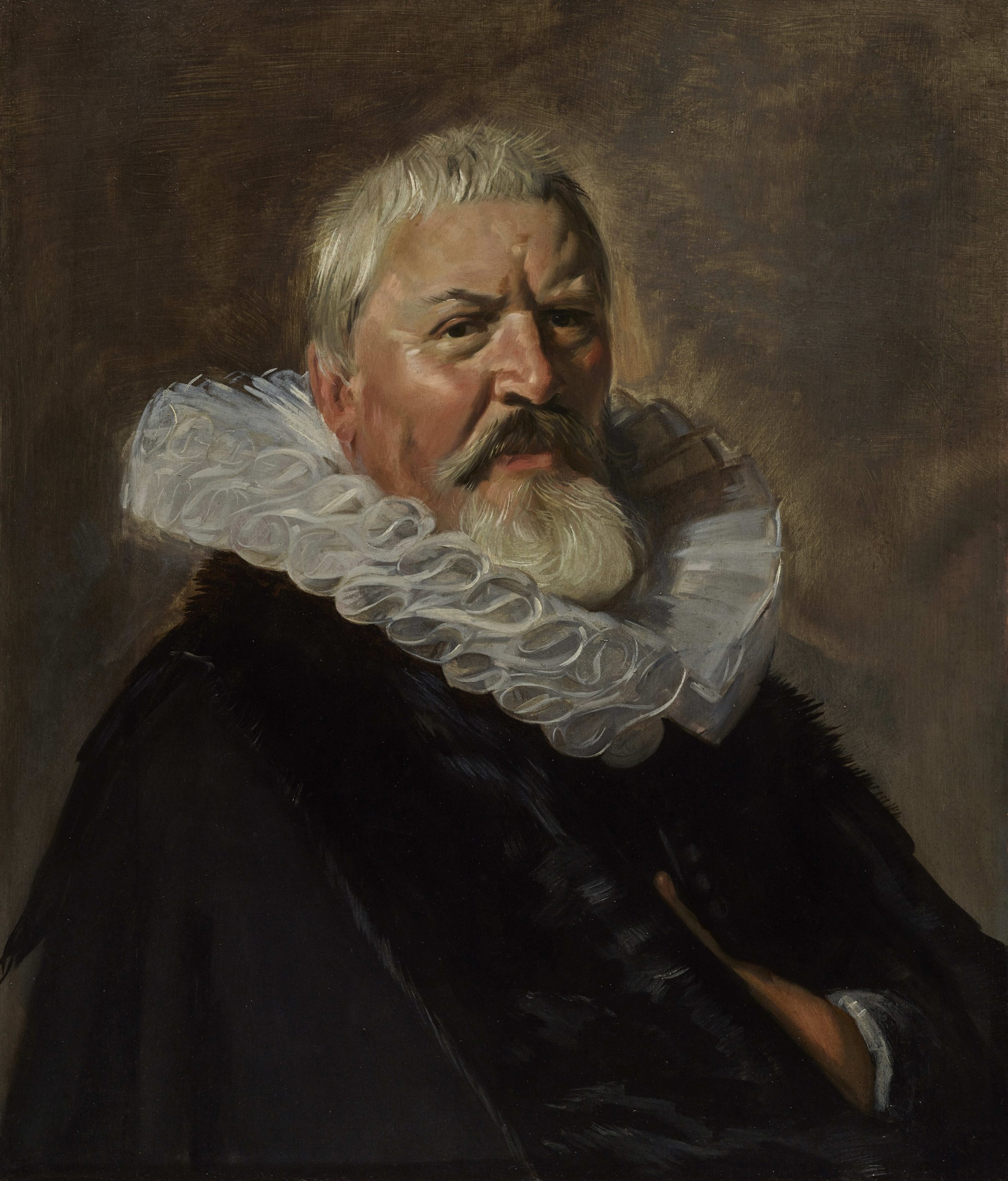Dallas Museum of Art Presents Two Portraits by Frans Hals

Frans Hals, Portrait of Pieter Jacobsz. Olycan, 1629-1630, oil on panel, Private Collection, Courtesy of David Koetser Gallery, Zurich.

Image: Frans Hals, Pieter Jacobsz. Olycan, about 1639, oil on canvas, The John and Mable Ringling Museum of Art, Bequest of John Ringling, 1936
Sun, Feb 23 - Sun, Jan 3 2021
This year, visitors to the Dallas Museum of Art have the rare opportunity to see two paintings that showcase the revolutionary technique of Frans Hals, the first great portraitist of 17th century Holland. Recognized for “painting character” through virtuosic, loose, and animated brushwork, Hals is considered to be the third prominent painter of the Dutch Baroque era along with Rembrandt and Vermeer. Hals’s portraits of Pieter Jacobsz. Olycan created about a decade apart and nearly 400 years ago—demonstrate the evolution of his technique at the highest point of his career. On loan to the DMA from The John and Mable Ringling Museum of Art and a private collection, the two works depicting the same sitter are perhaps unique for the artist’s oeuvre, as he rarely painted the same subject twice. They are shown side-by-side for the first time in the DMA presentation.

Frans Hals, Portrait of Pieter Jacobsz. Olycan, 1629-1630, oil on panel, Private Collection, Courtesy of David Koetser Gallery, Zurich.
“Building on the success of our focus exhibition on Caravaggio last summer, we are delighted to further our ongoing commitment to revive the display of Old Master European Art at the DMA by bringing these two extraordinary portraits by Frans Hals to Dallas,” said Dr. Agustín Arteaga, the DMA’s Eugene McDermott Director. “Hals’s revolutionary technique of loose and animated brushwork was extremely influential on subsequent generations of artists and his work will resonate particularly well with other parts of the collection of our encyclopedic museum.”
On view February 23–October 11, 2020, Frans Hals: Detecting a Decade is curated by Julien Domercq, the DMA’s Lillian and James H. Clark Assistant Curator of European Art, and the exhibition project is included in free general admission. “While at first glance the two portraits we will be showing may look more similar than different, this exhibition will encourage and empower visitors to spend time looking closely at Hals’s distinctive virtuoso handling of paint and see how much his technique evolved over the decade of the 1630s,” said Domercq. “Frans Hals was a remarkable artistic innovator and I am thrilled that we will be able to focus on his real subject: the act of painting itself.”

Frans Hals, Pieter Jacobsz. Olycan, c. 1639, oil on canvas. The John and Mable Ringling Museum of Art. Bequest of John Ringling, 1936, SN251.
Before Frans Hals (1582/83–1666), few artists had managed to capture the spontaneity of life in paint. Combining realism with his unique technique of loose brushstrokes, Hals’s portraits are startlingly direct; they give the impression of being in the presence of another living and breathing human being while also reflecting the act of painting. Hals’s work had a great influence on Modern artists of the 19th century; the realism, boldness and immediacy of his style served as inspiration to painters such as Gustave Courbet, Edouard Manet and Vincent van Gogh.
Hals was the leading portrait painter in the Dutch city of Haarlem (near Amsterdam) during the period following the Reformation. As a young man, Hals witnessed the creation of a free, Protestant Dutch Republic; the small, mercantile nation quickly became one of Europe’s most prosperous centers of trade. When it came to art, the austere taste of Protestant merchants from Holland was very different from the exuberant taste of the Catholic kings and princes of southern Europe. While Protestantism left little scope for religious art, many prosperous merchants wished to commission portraits to record their likenesses and their new place in the world. Pieter Jacobsz. Olycan (1572–1658), the sitter in this exhibition’s portraits, was one of the most powerful men in Haarlem. His breweries, De Vogelstruys (The Ostrich) and ‘t Hoeffeyser (The Horseshoe), brought him considerable wealth and social status; he served as Burgomaster (Mayor) of Haarlem on numerous occasions. Painted about a decade apart, these two works chart Olycan’s changing appearance as he grew older, but also offer considerable insight into the evolution of Hals’s style at the peak of his career.
To read more about this exhibition, please download the Dallas Museum of Art’s brochure here.
After its DMA presentation, Frans Hals: Detecting a Decade will travel to The John and Mable Ringling Museum of Art, Sarasota, FL, where it will be on view Feb 14, 2021 – May 16, 2021.
About the Dallas Art Museum
Established in 1903, the Dallas Museum of Art (DMA) is among the 10 largest art museums in the country and is distinguished by its commitment to research, innovation, and public engagement. At the heart of the Museum and its programs is its global collection, which encompasses 25,000 works and spans 5,000 years of history, representing a full range of world cultures. Located in the nation’s largest arts district, the Museum acts as a catalyst for community creativity, engaging people of all ages and backgrounds with a diverse spectrum of programming, from exhibitions and lectures to concerts, literary events, and dramatic and dance presentations. With a free general admission policy, the DMA welcomed more than 875,000 visitors in 2019. The DMA is an Open Access institution, allowing all works believed to be in the public domain to be freely available for downloading, sharing, repurposing, and remixing without restriction. For more information, visit DMA.org.
The Dallas Museum of Art is supported, in part, by the generosity of DMA Members and donors, the citizens of Dallas through the City of Dallas Office of Arts and Culture, and the Texas Commission on the Art .